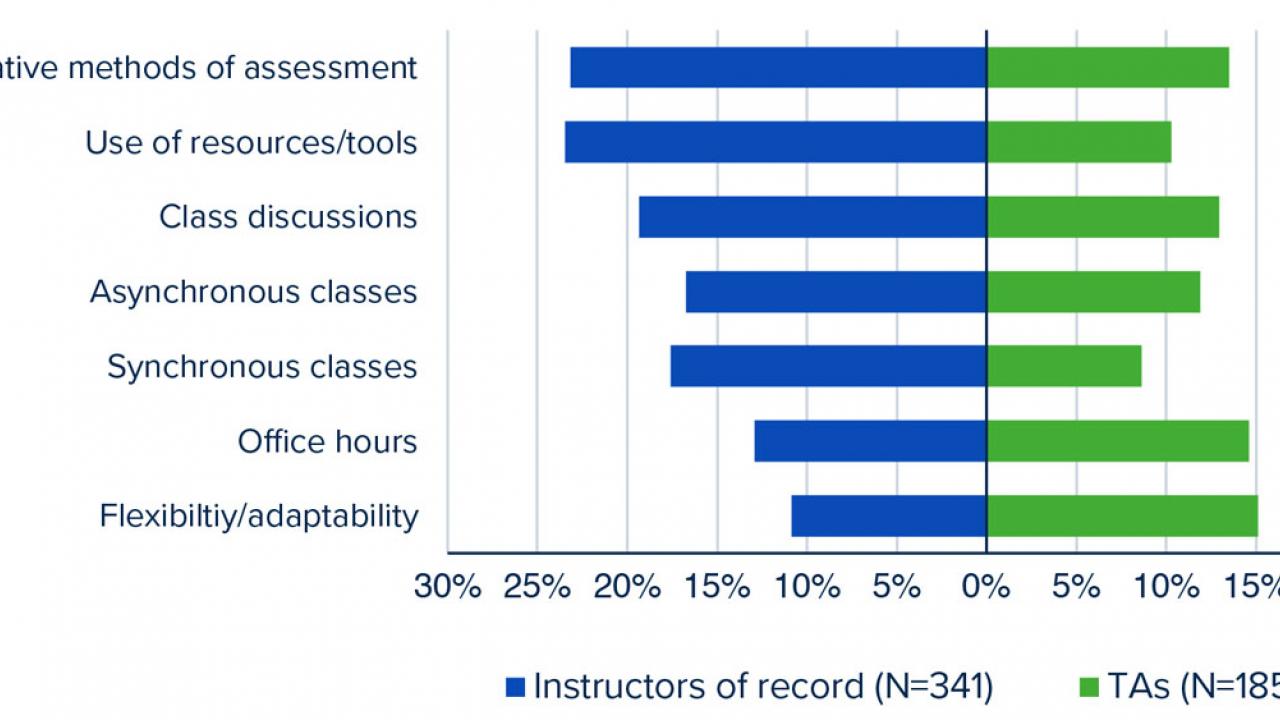The Center for Educational Effectiveness has posted its draft report on teaching and learning in UC Davis’ first quarter of all-remote instruction, spring 2020. Based on surveys of students and instructors, the report offers insights for instructors who will be doing more remote instruction this fall.
The report, “Insights From Spring 2020 Remote Instruction: Results From Surveys on Remote Learning and Teaching,” presents responses from more than 2,000 students, 418 instructors of record and 264 teaching assistants.
ASSESSMENT SYMPOSIUM
Registration is open for the 2020 Student Learning Outcomes Symposium, on the theme of “Exploring the Intersections Between Equity and Assessment.” Presented by the Center for Educational Effectiveness, the symposium is scheduled from 8:45 a.m. to 12:45 p.m. Tuesday through Thursday, Sept. 22-24. “Join national assessment leaders and UC Davis faculty and staff ... as we consider challenging questions and build capacity to enact our commitment to equitable student outcomes,” the organizers said.
The report describes both closed- and open-ended responses into approaches to remote instruction that worked well, which activities motivated students and fostered a sense of connection with both instructors and their peers, what the barriers were to remote learning, which were most time-effective for instructors, which software was most and least effective, departmental support for instructors, and more.
While office hours, live lectures and discussions, and multiple low-stakes assessments were the instructional activities that ranked most effective, students offered comparative insights into how those activities were administered in classes that worked well for them and those that did not.
Instructor flexibility was key. For example, while frequent low-stakes quizzes were generally rated favorably, variations in how quizzes were administered worked “well” or “not well” for students. One student commented: “The quizzes in [the class that did not work well remotely] were a real blow to my morale, there was never enough time for them and they were longer than ones that we had taken in the past. The reason [the class that worked well] was better for me was because my professor was very flexible with us and allowed us to do things at our own pace so long as they were done before the deadline.”
Timing was another often-mentioned issue that varied widely among instructors. Many students reported that being allowed a generous window of time to complete assignments and assessments was less stressful and gave them a buffer in case technology wasn’t working.
The preliminary report is available online. The final report, forthcoming this winter, will incorporate appendices and further analysis.
Media Resources
Sharon Campbell Knox, 530-752-4917, scknox@ucdavis.edu
